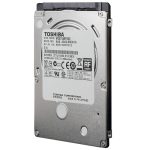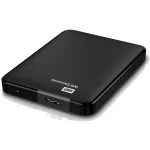Google Photos is a popular cloud storage service that allows users to store and share their photos and videos. While it’s a convenient way to access your photos from anywhere, there are times when you might want to have a physical backup of your photos on an external hard drive. This could be for security reasons, or simply because you prefer to have a local copy of your photos.
In this guide, we’ll walk you through the steps of moving your photos from Google Photos to an external hard drive.
Prepare Your External Hard Drive
Before you start transferring your photos, you’ll need to prepare your external hard drive. Here’s what you need to do:
- Connect your external hard drive to your computer. Make sure it’s properly connected and recognized by your computer’s operating system.
- Format your external hard drive. If your hard drive is new or has been used for other purposes, you’ll need to format it before using it to store your photos. This will erase any existing data on the drive, so make sure you’ve backed up any important files.
Download Google Photos Backup and Sync
Google Photos offers a desktop app called Backup and Sync that makes it easy to transfer your photos to your computer. Here’s how to download and install it:
- Go to the Google Photos website and click on the “Download” button.
- Follow the on-screen instructions to download and install the Backup and Sync app.
- Open the app and sign in with your Google account.

Choose Your Backup Settings
Once you’ve installed and opened the Backup and Sync app, you’ll need to configure your backup settings. This will determine which photos and videos are backed up to your computer:
- Click on the “Settings” icon in the app.
- Go to the “Backup” tab.
- Choose the folders that you want to back up. By default, the app will back up all of your photos and videos.
- Select the quality of the photos you want to back up. You can choose between “High quality” (unlimited storage) or “Original quality” (limited storage).
- Click on “Start backup” to begin backing up your photos to your computer.
Transfer Photos to Your External Hard Drive
Once your photos have been backed up to your computer, you can transfer them to your external hard drive:
- Open the folder where your Google Photos are stored on your computer. This is usually the “Google Photos” folder in your “Pictures” folder.
- Select the photos that you want to transfer. You can select individual photos or entire folders.
- Copy the selected photos to your external hard drive. You can do this by right-clicking on the selected photos and choosing “Copy,” then going to your external hard drive and choosing “Paste.”
Explanation of Google Photos
Google Photos is a cloud-based photo and video storage service that offers users unlimited storage for photos at “High quality” resolution and 15 GB of storage for videos at “Original quality.” It’s seamlessly integrated with Google’s other services like Gmail, Google Drive, and Google Assistant, making it a convenient and powerful tool for managing your visual content.
Key Features:
- Unlimited photo storage: Store as many photos as you like at “High quality” resolution, which is typically more than enough for most users.
- 15 GB of video storage: Enjoy 15 GB of storage for your videos at “Original quality.”
- Automatic backup: Google Photos automatically backs up your photos and videos from your connected devices, ensuring they’re always safe and accessible.
- Intelligent organization: Google Photos uses artificial intelligence to automatically organize your photos into albums based on people, places, and things.
- Shared albums: Easily share photos with friends and family by creating shared albums.
- Collaborative editing: Collaborate with others on shared albums by adding comments, reactions, and edits.
- Search and find: Quickly find photos using search terms, faces, locations, or even objects in the photos.
- Create animations and collages: Google Photos allows you to create fun animations and collages from your photos.
- Offline access: Download photos and videos to your device for offline viewing.
- Integration with other Google services: Google Photos seamlessly integrates with other Google services like Gmail, Google Drive, and Google Assistant.
How to Use Google Photos:
- Download the app: Download the Google Photos app on your smartphone or tablet, or access it through a web browser on your computer.
- Sign in: Sign in with your Google account.
- Back up your photos: Google Photos will automatically back up your photos and videos from your connected devices.
- Explore features: Explore the app’s features to find photos, create albums, share photos, and more.
Benefits of Using Google Photos:
- Convenience: Google Photos makes it easy to manage your photos and videos across multiple devices.
- Safety: Your photos and videos are backed up to the cloud, ensuring they’re safe and accessible even if your device is lost or damaged.
- Organization: Google Photos’ intelligent organization features help you find photos quickly and easily.
- Sharing: Easily share photos with friends and family.
- Creativity: Create fun animations and collages from your photos.
In conclusion, Google Photos is a powerful and convenient tool for managing your photos and videos. With its unlimited photo storage, intelligent organization, and seamless integration with other Google services, it’s a great choice for anyone looking for a reliable and easy-to-use photo storage solution.

Additional Tips
- Use a reliable external hard drive. Make sure your external hard drive is from a reputable brand and is designed for long-term storage.
- Regularly back up your photos. It’s important to back up your photos regularly to protect them from loss or damage.
- Consider using cloud storage. In addition to an external hard drive, you can also consider using a cloud storage service like Google Photos to store your photos. This can provide an extra layer of protection and make it easier to access your photos from multiple devices.
Tips for organizing photos on the external hard drive
Once you’ve transferred your photos from Google Photos to your external hard drive, it’s important to organize them properly to make them easier to find and manage. Here are some tips for organizing your photos:
Create a Folder Structure
- Create main folders: Start by creating main folders to categorize your photos, such as “Travel,” “Family,” “Events,” “Hobbies,” etc.
- Create subfolders: Within these main folders, create subfolders to further organize your photos. For example, if you have a “Travel” folder, you could create subfolders for specific locations or trips.
Use Descriptive File Names
- Use clear and concise file names: When saving your photos, give them descriptive file names that reflect the content. For example, instead of naming a photo “IMG_1234.jpg,” name it “Family_Vacation_2023.jpg.”
- Include keywords: Consider including relevant keywords in your file names to make it easier to search for your photos later.
Use Metadata
- Add metadata: Many photo editing software programs allow you to add metadata to your photos, such as location, date, and keywords. This can help you organize and search for your photos more efficiently.
Consider Using Photo Management Software
- Use photo management software: There are many photo management software programs available that can help you organize, edit, and share your photos. Some popular options include Adobe Lightroom, Apple Photos, and Picasa.
Regularly Back Up Your External Hard Drive
- Back up your external hard drive: Even though your photos are stored on an external hard drive, it’s still important to back them up regularly. This will protect your photos from loss or damage in case your external hard drive fails.
By following these tips, you can effectively organize your photos on your external hard drive and make it easier to find and manage them.

Moving your photos from Google Photos to an external hard drive is a simple process that can help you protect your photos and ensure that you have a physical backup. By following the steps outlined in this guide, you can easily transfer your photos to your external hard drive and keep them safe.


